Understanding Graphs
- August 15, 2024
- Posted by: admin
- Category: Mathematical Literacy Notes
In this page you will learn about Understanding Graphs, a Mathematical Literacy subject topic that covers axes, shapes, Sloppiness and critical values. It is also a recommended learning topic for grade 12 students. Study or download the notes with questions and answers.

or
Also Checkout 👇
Join and follow our social media accounts to stay ahead of the curricula for Mathematics, Mathematical Literacy and more subjects. with our termly updates. Get access to notes, exercises, past question papers, and more learning resources tailored specifically for Grade 10, 11, and 12 students.
About Understanding Graphs
In these notes you are going to be able to practice and Understand Graphs and axes, shapes, Sloppiness and critical values. Make sure to practice all the questions so that you get used to solving problems of this nature.
![]()
Note that “Understand Graphs” is a sub topic and you can also access more grade 12 notes, questions and answers under the main topic “Operations On Numbers And Calculator Skills” which is one of the recommended learning topics in the Grade 12 Mathematical Literacy Curriculum.
Before you continue check it out 👇
Want To Master Percentage Calculations?
Sign up for free and complete more quizzes to help you
master this topic.
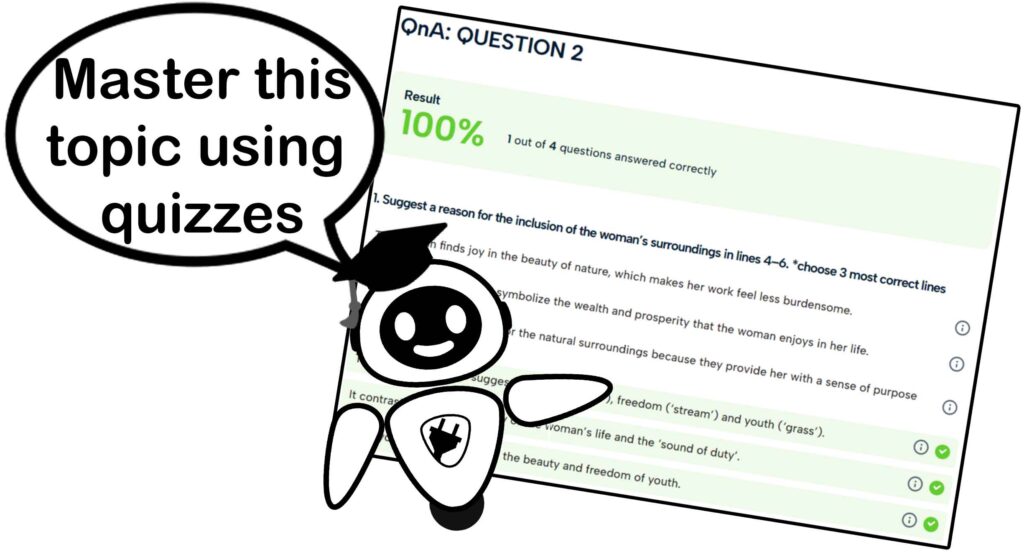
Continue from here👇
Features of a Graph in Context
Axes
- The x-axis is the horizontal line, typically representing the independent variable
- The y-axis is the vertical line, usually representing the dependent variable.
Shape of the graph
-
A positive straight line graph can represent the growth of savings in a bank account with a fixed interest rate. As time progresses, the balance in the account steadily increases, illustrating an increasing function.
- A negative straight line graph indicates a function that is decreasing. For example, in a negative straight line graph, if the graph shows a company’s revenue over time, it indicates that the revenue is decreasing as time progresses.
- A horizontal straight line typically indicates no movement. On a distance-time graph, if a car is parked and not moving, the line representing its distance from the starting point will be a horizontal straight line, showing that the distance remains constant over time.
- A curved line, such as a parabola, often illustrates the motion of an object. A parabolic curve, like the path of a ball thrown into the air, represents the motion of the ball as it rises and falls back to the ground.
Slope of a straight line graph
- The steeper the slope of the straight line, the faster the dependent variable (y) changes in relation to the independent variable (x).
- In a distance vs. time graph, the slope represents…

Critical values of the graph
- Determine the maximum and minimum points on the graph.
- Determine the points where the graph crosses the x-axis and/or y-axis, known as the zero values of the graph.
Example exercise
1. Determine the points where the graph crosses the x-axis and/or y-axis, known as the zero values of the graph.
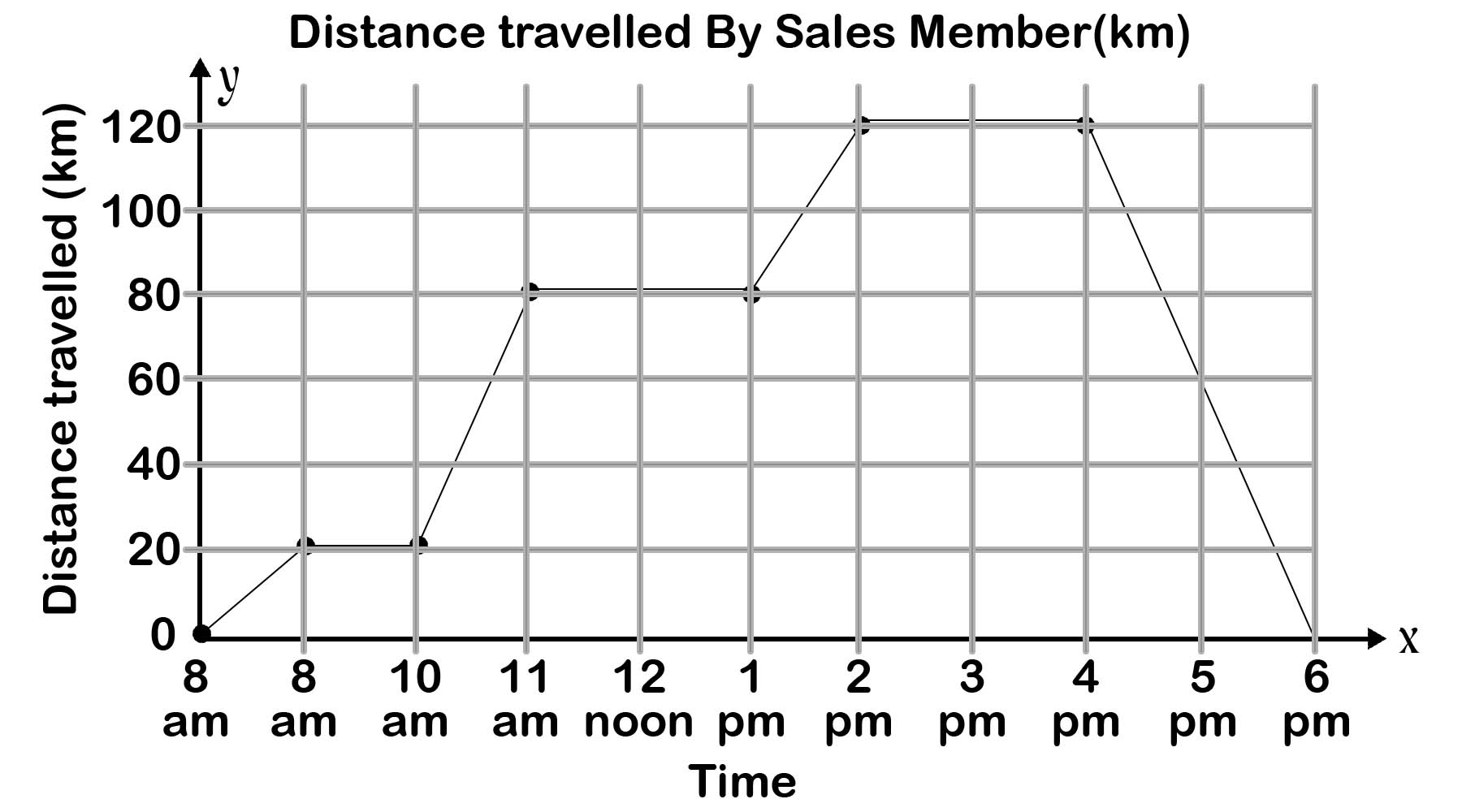
1.1 What time did the sales member leave home?
= 8 am
1.2 How far did the sales member travel to reach their first client?
=20 km
1.3 How much time did the sales member spend with his first client?
=1 hour
1.4 How many clients did the sales member meet with in a day?
=3 clients
1.5 How many kilometers did the sales member travel between his first and second client?
80-20 = 60 km
1.6 Explain what the salesman did between 4 p.m. and 6 p.m.
=Salesman travelled back home.
1.7 Calculate the average speed at which the salesman traveled between 4 p.m. and 6 p.m.
average speed = (change in distance) * (change in time)

2. The graph below shows Ben’s distance from the water over time as she jumps off a diving board.
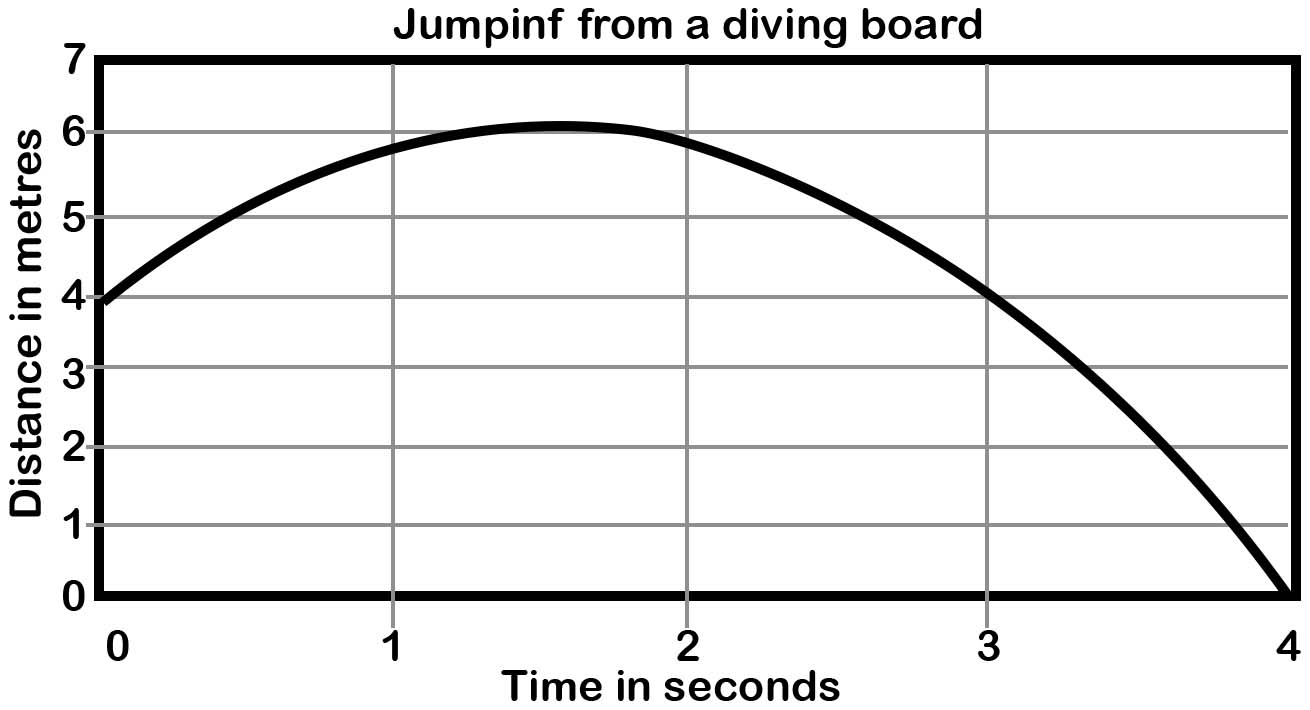
2.1 Identify the dependent and independent variables in this graph.
=Dependent: Distance ; Independent: Time
2.2 What is the height of the diving board above the water?
=4 m
2.3 How much time does it take Ursula to reach a height of 6 meters above the water?
2.4 Why are there two different time values when the height is 6 meters?
=Ben crosses the 6-meter mark twice: once when she jumps off the diving board and again as she dives into the water.
2.5 Determine the maximum height reached by Ursula and find out the number of seconds it takes to reach this height.
= ±6,2 m after 1,5 seconds
2.6 How many seconds elapsed between Ben jumping off the diving board and her entering the water?
= 4 seconds
3. The graph below illustrates the historical exchange rates between the US Dollar (USD) and the South African Rand (ZAR) for the year 2013.

3.1 What was the exchange rate on May 15, 2013?
=8,84
3.2 On which date was the exchange rate around 8.60?
=14 February
3.3 Explain the general trend shown in this graph of the US Dollar to South African Rand exchange rate for the year 2013.
=Between January and May, the exchange rate between the US Dollar and the South African Rand ranged from 8.40 to 8.84. However, starting on May 15, the exchange rate began to rise steadily, reaching around 9.48 by December 30.
4. The graph below illustrates the distance traveled by the North family on their journey from Johannesburg to Cape Town:
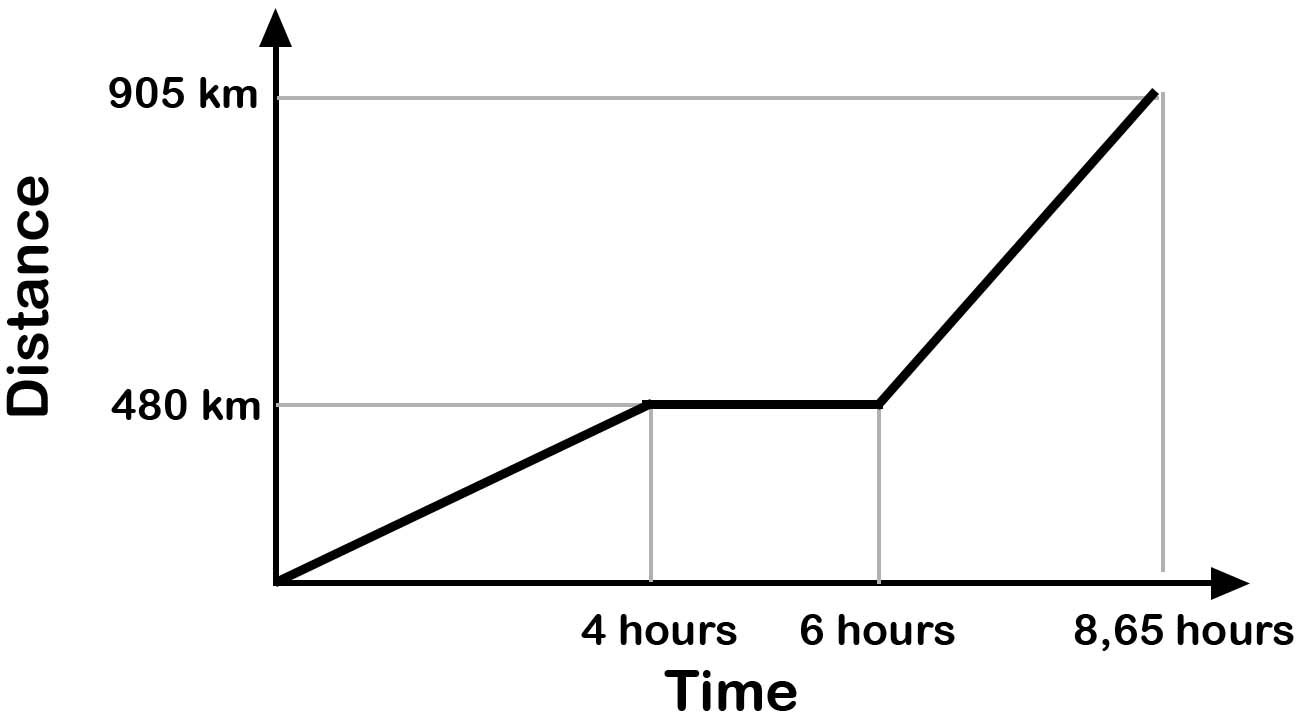
4.1 Identify the variables: independent and dependent.
4.2 What does the flat (horizontal) section of the graph indicate?
4.3 At which point during the trip did the family travel the fastest? Provide a reason to support your answer.
4.4 If the speed limit on the road was generally 120 km/h, do you think the North family exceeded the speed limit during the last 2.65 hours? Support your answer with calculations.
5. The graph below illustrates the distance Thabang covered at 15-minute intervals during the Grape Run half marathon (21.1 km). Use the graph to answer the following questions:
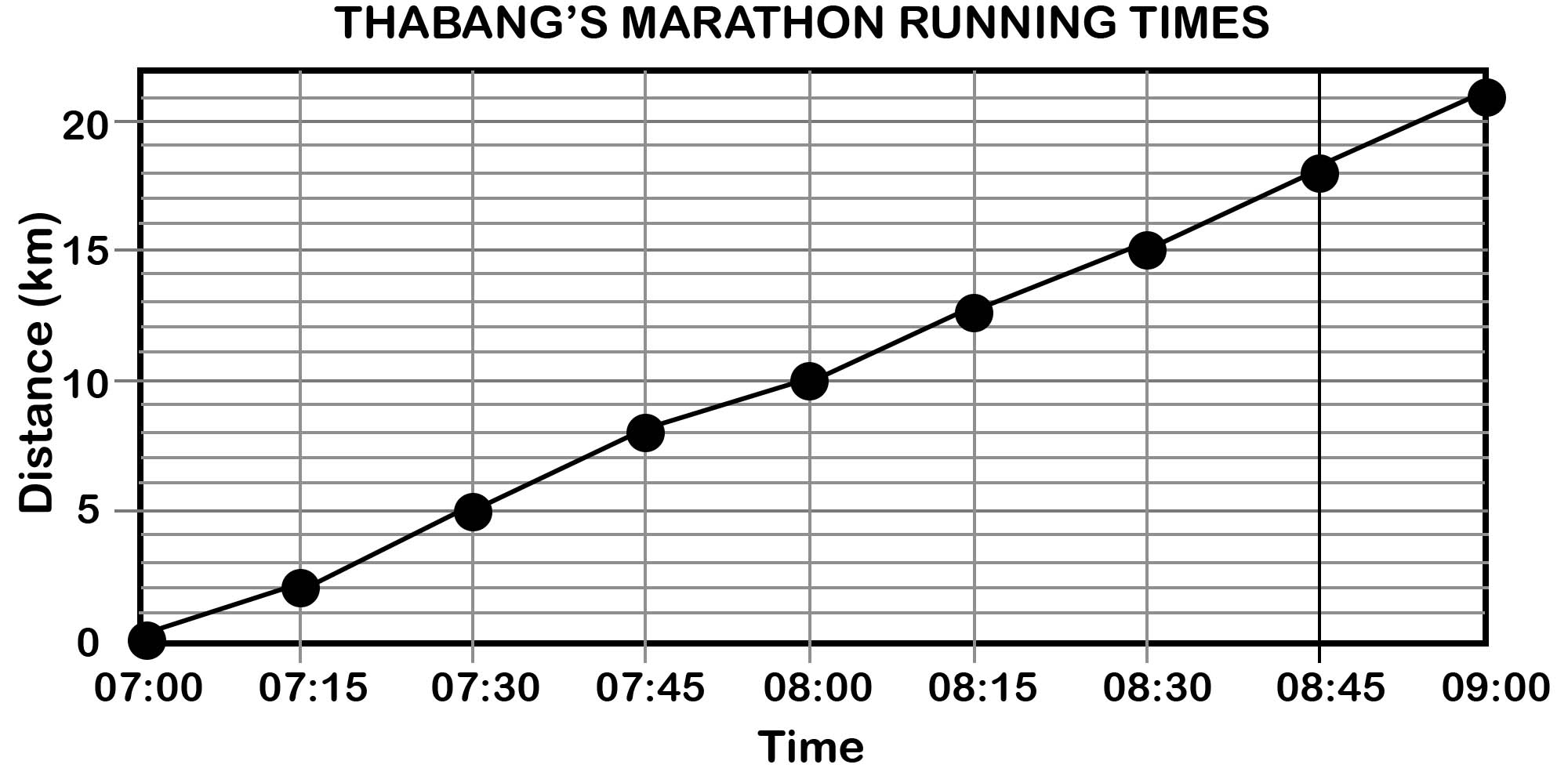
5.1 Determine the independent variable.
5.2 How far did Thabang travel in the first 15 minutes?
5.3 How many minutes did it take Thabang to travel 12.5 km?
5.4 Did Thabang take a break at any point during the half marathon? Please provide a reason for your answer.
5.5 How does his speed (in km/h) during the first 15 minutes compare to his speed between 07:15 and 09:00? Show your calculations and provide a possible explanation for your results.

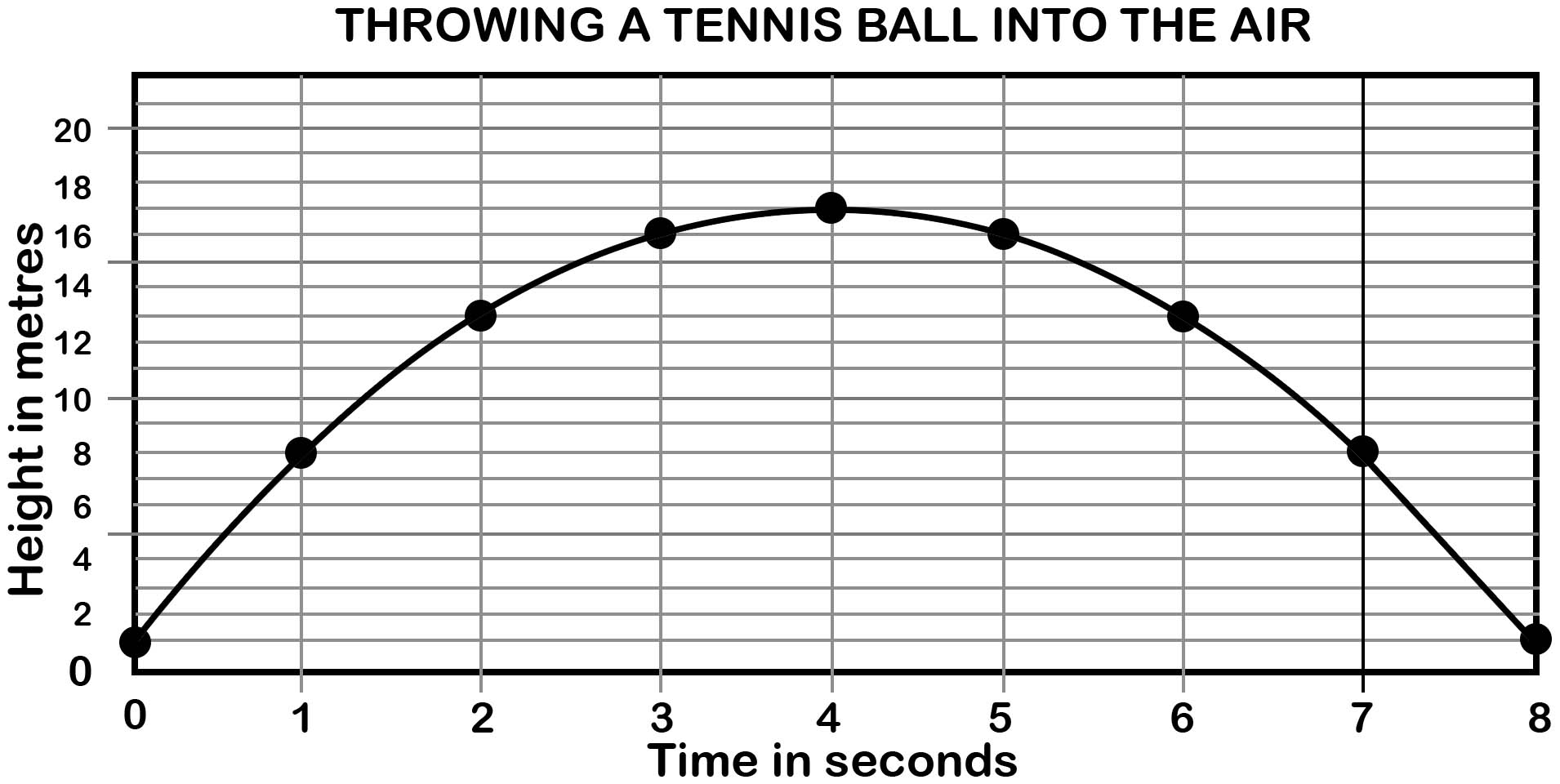
6.1 At 0 seconds, the ball is 1 meter above the ground. What does this indicate?
6.2 How much time did the ball take to reach its highest point?
What was the highest point the ball reached?
6.3 How long was the ball in the air?
6.4 Did Richard catch the ball, or did it fall to the ground? Explain your reasoning.
Answers:
4
4.1
independent variable: Time
Dependent variable; Distance
4.2
The flat, horizontal section of the graph indicates the period when the North family paused their journey, as the distance stayed constant at 480 km, suggesting they may have taken a break.
4.3
The family traveled at their fastest pace between 6 and 8.65 hours. During this time, the slope of the straight-line graph is at its steepest.

4.4

5.1 Time
5.2 2 km
5.3 1h15mins = 60 + 15 = 75 minutes
5.4
No, because Thabang's distance continued to increase steadily over time.
OR
No, the graph does not have a flat or horizontal straight line.
5.5
First 15 min:


Rest of race (07:15 - 09:00):


Thabang started the race at a slower pace for the first 15 minutes, then increased his speed to 10.91 km/h. This could have been because he wanted to observe the pace of the other runners or simply because he was warming up his muscles during the initial 15 minutes.
6.1
Richard's hand is 1 metre from the ground.
6.2
4 seconds; 17 metres
6.3
8 seconds
6.4
He caught the ball. The height at 8 seconds was 1 metre.
Practice More Questions Like ThisBefore you continue also check this out 👇
Get 100% on your exam essays using our essay cramming assistant!
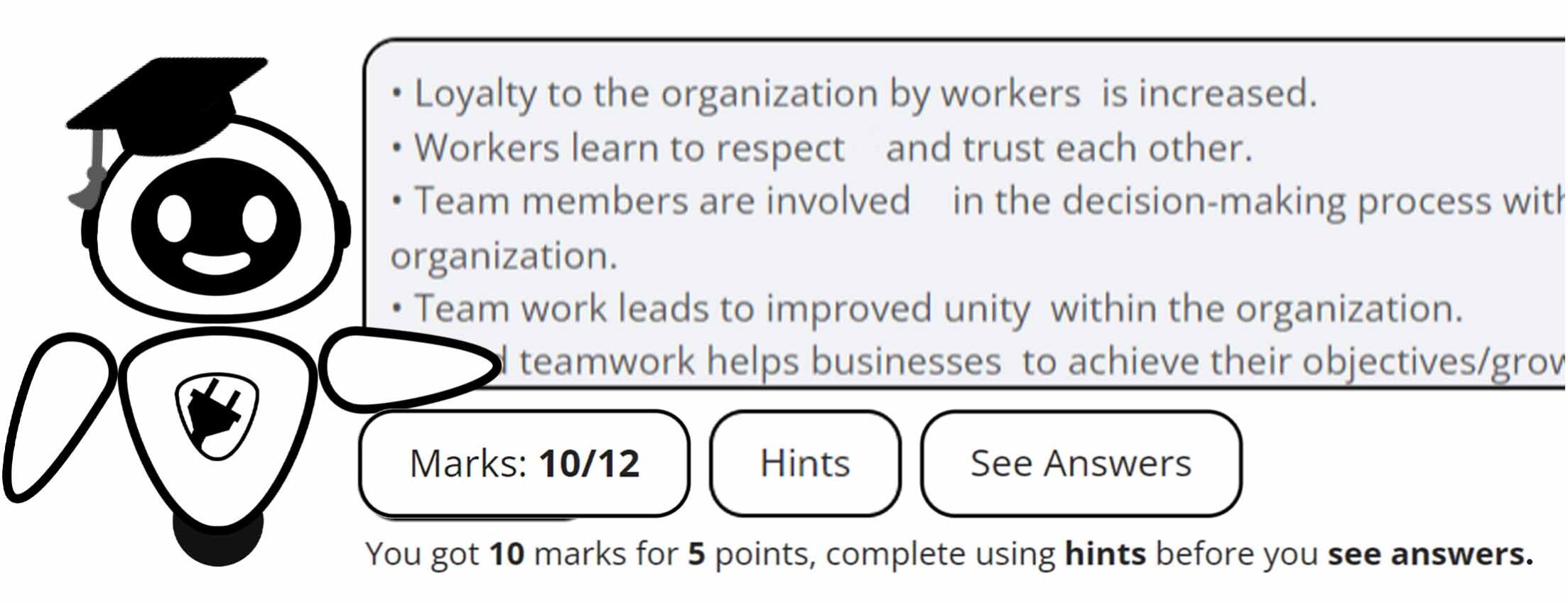
It is useful if you want to cram essays for subjects such as
Business Studies, Economics, Geography, History, Home Languages, First Additional Languages and more…
Why use it?
Helps you structure how you write essays√
Helps you memorize and recall points and sentences including hints√
Marks your essays as you practice writing√
Continue from here👇
Other Maths LIT Notes
Do you have any query regarding Questions and/or Answers? Let us know👇
Other Practicing Material
- Newest
- Oldest
- Most Viewed














